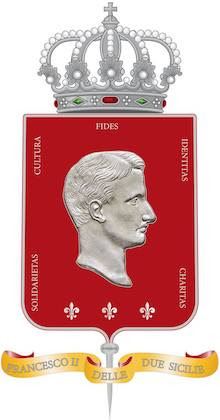_-_(MeisterDrucke-1464556).jpg) |
| The Revolt of the Neapolitan Fisherman Tommaso Aniello, known as Masaniello (1622-1647) in Naples by Giuseppe Mazza (Museo della scienza di Milano) |
A lu tiempo de chisti scunfuorte
Masaniello è bestuto da muorto.
Dint’’a nicchia ’na capa cu ll’ossa
nce ha lassato ’na coppola rossa.
Chesta coppola dà ’na voce,
quanno ’a famme nun è doce,
quann’’o popolo resta ’ncroce,
quanno pave ’stu tributo
pure ’a tassa ’ncopp’’o tavuto.
A lu tiempo de chisti scunfuorte
Masaniello è bestuto da muorto.
Masaniello s’’o credono muorto… [1]
Gianandrea de Antonellis’ article Fra’ Diavolo vive ancora nello spettacolo “Voci, suoni e canti di Briganti in Terra di Lavoro” (Fra’ Diavolo still lives on in the show “Voices, Sounds and Songs of Brigands in Terra di Lavoro”) is a compelling reflection on the politics of memory. More than a historical survey, it is a corrective act: dismantling persistent distortions surrounding figures such as Masaniello and Fra’ Diavolo, and restoring them to their rightful place in Southern Italy’s cultural consciousness.
De Antonellis begins with a meditation on the necessity of heroes.
“Blessed is the people that has no need of heroes." The pacifist and egalitarian intent of whoever wrote that sentence is beyond doubt, but it can also be read in another sense: blessed is the one who has no need of heroes—or of money, or of food, or of anything else—because he already has them, not because there is no need for them.
A people—any people—needs heroes. That is why we are naturally drawn, from childhood, to the stories of historical or literary heroes: Hector and Achilles, Horatius Cocles and Mucius Scaevola, Attilius Regulus and Pheidippides, Lancelot and Gawain… In the Kingdom of Naples we can list the Great Captain, Ettore Fieramosca, Masaniello of Sorrento, and his Amalfitan namesake, Cardinal Ruffo, the Prince of Canosa…
This sets the frame: a people bereft of heroes is a people deprived of memory. De Antonellis shows how cultural tradition continually seeks to supply such figures, though later generations may distort their meaning.
Particularly striking is the article’s correction of Masaniello’s legacy. Popularized as a revolutionary icon, Masaniello in fact led a revolt that was explicitly anti-revolutionary.
Masaniello—who has (wrongly) become a revolutionary symbol (in reality his revolt was fully anti-revolutionary, because it aimed to restore the previous taxation, the respect for Neapolitan law, and, above all, it burst forth with the cry "Long live the King of Spain! Death to bad government!")—is thus seen as the incarnation of the Volksgeist, the "spirit of the people," ready to rise up in case of abuses by the (mis)rulers of the day…
Here, de Antonellis restores Masaniello as a figure of popular legitimacy rather than revolutionary rupture, reminding us that loyalty and protest were not opposed but intertwined.
 |
Bust of the hero Fra' Diavolo
sculpted by Raffaele Mollo (2019) |
If Masaniello has been miscast as a revolutionary, Fra’ Diavolo has suffered the opposite fate: reduced from a colonel and duke into a bandit or comic rogue.
But if, thanks to a deft historiographical falsification that is hard to kill, Masaniello has become a (wrong, I repeat) symbol of the revolutionary spirit, it is far more difficult to turn into a progressive a champion of legitimism like Michele Arcangelo Pezza (1771–1806), a guerrilla leader who became a colonel of the Neapolitan army, created Duke of Cassano by Ferdinand IV, universally known by the nickname Fra’ Diavolo.
Unable to enlist him ideologically, liberal culture diminished him through Auber’s opéra-comique (1830) and later through Hollywood parody, turning a model of fidelity into a theatrical thief. De Antonellis sharply unmasks this falsification, showing Fra’ Diavolo as a hero of incorruptible loyalty who refused French offers of rank and money: “Because when one has sworn, one has sworn!”
The review culminates in Claudio Saltarelli’s theatrical revival, which gives Fra’ Diavolo his true voice. Through Raimondo Rotondi’s performance in the Laborino dialect, [2] the insurgent emerges not as an artifact of the past but as a living exemplar of courage and fidelity.
And so, on 11 November 1806, Colonel Michele Arcangelo Pezza died. And with him, the Duke of Cassano also died. But Fra’ Diavolo did not die. Because Fra’ Diavolo is always reborn, in each of us.
The sabre of Fra’ Diavolo becomes the counterpart to Masaniello’s red cap, a symbol that can rally every stratum of society—soldiers, nobles, clergy, and common people alike—around the perennial cause of resisting oppression.
De Antonellis’ essay, and Saltarelli’s theatrical work, are acts of cultural reclamation. They remind us that heroes must not be abandoned to distortion, whether by ideological misreading or by the trivializing force of entertainment.
The closing exhortation is the article’s most powerful contribution:
Put it in your heads: the story of Fra’ Diavolo is your story. Whoever wants to make you forget it does not wish you well.
By rehabilitating Masaniello and Fra’ Diavolo, de Antonellis does more than narrate history—he defends memory itself. His work is a reminder that cultural truth, once recovered, can still speak with urgency to the present.
~ By Giovanni di Napoli, October 2nd, Feast of the Guardian Angels
* Translations are my own.
Notes
[1] Excerpt from the traditional Neapolitan ballad ‘O cunto ’e Masaniello, preserved in oral tradition and performed by the Nuova Compagnia di Canto Popolare on the album Li sarracini adorano lu sole (EMI, 1974).
In the time of these hardships
Masaniello is dressed as a dead man.
Inside the niche, a skull with bones
has left a red cap there.
This cap gives a voice,
when hunger is not sweet,
when the people are left on the cross,
when it pays this tribute—
even the tax on the coffin.
In the time of these hardships
Masaniello is dressed as a dead man.
They think Masaniello is dead…
[2] The “Laborino dialect” is the local speech of the historical province of Terra di Lavoro (covering parts of northern Campania and southern Lazio), closely related to Neapolitan but marked by distinct regional features.


















_-_(MeisterDrucke-1464556).jpg)































